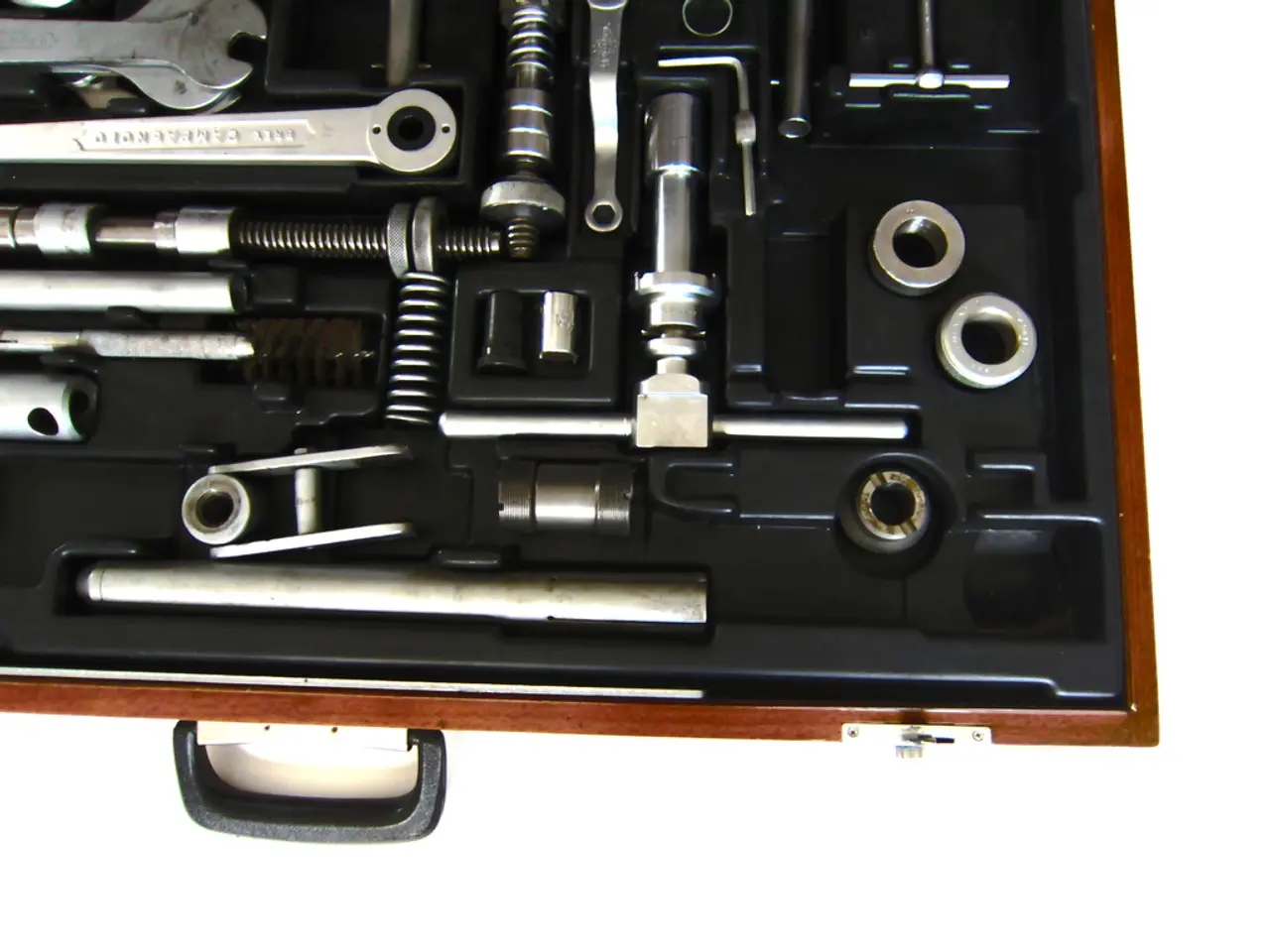Transformed Software Update Group into Baseline Tool via SCCM Software Update Process
In the realm of Systems Center Configuration Manager (SCCM), automating the conversion of Software Update Groups (SUGs) to Configuration Baselines can be achieved using various tools and methods. One such tool is the SCCM SUG to Configuration Baselines tool, designed specifically for this purpose.
This tool, often leveraging PowerShell scripting within SCCM or the Recast Automation Tools, enables the automatic creation of configuration baselines from existing Software Update Groups.
Here's a simplified step-by-step guide:
- Identify the Software Update Group in SCCM you wish to convert.
- Export the update group's content and detection logic using the tool's interface or a PowerShell script.
- Create a new Configuration Baseline object in SCCM.
- Add Configuration Items corresponding to the updates in the original SUG into the baseline.
- Deploy this new Configuration Baseline as needed.
The Recast Automation Tools, particularly the Recast Builder, serve as an example of an SCCM extension that can help automate such tasks through customizable PowerShell workflows and integration into the SCCM console.
However, a detailed step-by-step guide or links specifically to the "SCCM SUG to Configuration Baseline tool" or its API/automation capabilities are not readily available in current search results.
To proceed, ensure you have access to the SCCM SDK and PowerShell modules for SCCM. You can then search for or use community scripts/tools, such as those from Recast Software or GitHub repositories, that automate SUG-to-baseline conversion.
Optionally, the Recast Automation Tools Builder can be used to create a custom automation action embedded in SCCM’s console.
For official Microsoft documentation or detailed tooling around this exact conversion, it's best to consult the SCCM docs or community forums directly, as this is a specialized automation scenario.
The SCCM SUG to Configuration Baseline tool, when run on a computer with the SCCM Console installed and from an account that can make WMI queries against the SCCM Site Server, converts an SCCM Software Upgrade Group to a Configuration Baseline.
For instance, a created Configuration Baseline might be named CB.Software.Update.(SVR - 1 - Pilot Server Updates - Net Framework 2018-02-13 07:50:09).
To automatically replace the baseline without prompting, modify the if logic within the Get-DGMSCCMWMISUGConfigurationBaselineDetails Function.
The tool can compress the XML and RESX files into a .CAB file for direct importing via the SCCM Console GUI or import them through a WMI instance POST.
Users are required to download the required file, unzip it, and run the New-DGMSCCMSUGBaseline.ps1 script within PowerShell.
It's important to note that understanding the XML file's structure can be useful for manipulating the file created by this tool or one created from a Configuration Baseline export in the console.
Lastly, the tool automates the process of creating a Configuration Baseline on a schedule in the background, making management of your SCCM environment more efficient.
Read also:
- Web3 gaming platforms METABORA and Baligames join forces for the release of their puzzle RPG game combination
- Potential Fire Hazards Lurking in AI Data Facilities and Their Impact on U.S. Electrical Infrastructure
- Top-tier PCs for Gamers in 2025
- Drone Technology as a First-Response Interface (DAFI) Explained







